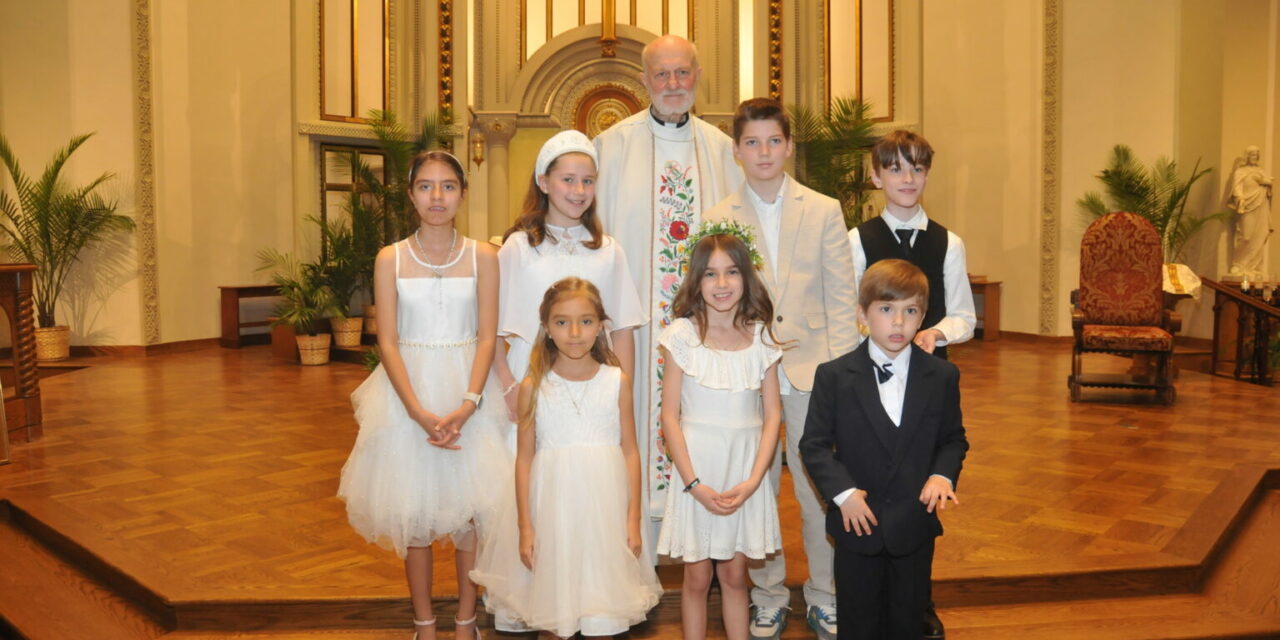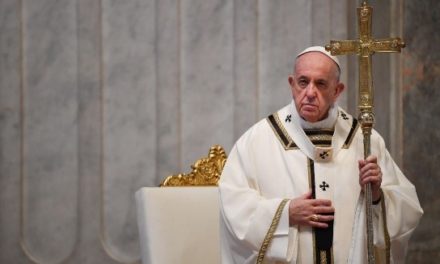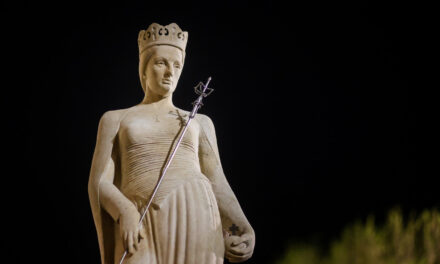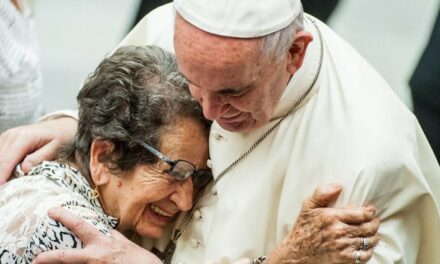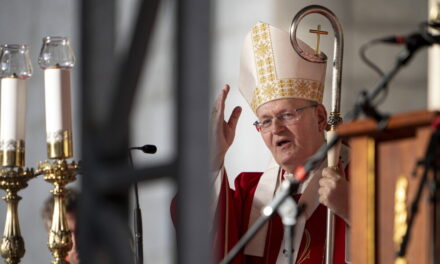In the Hungarian Catholic community of St. István in New York, which recently celebrated its 120th anniversary, a first communion was held again after more than ten years.
The good news is overshadowed by the fact that the seven First Communions and the approximately one hundred people participating in the celebration are only a fraction of the fifty thousand Hungarians in New York. This is saddening even if we know the fate of the Hungarian Catholic community there, which seems to have been sealed with the closing of the church eight years ago, although the president of the secular committee, Róbert Winer, also stated when receiving the recently awarded Hungarian Silver Cross of Merit:
they cannot give up hope that they will get the church back and have their own priest, because Iván Csete, who prepares the first communicants, and Father Laci Balogh, the parish priest from Passaic, take turns coming to say mass every two weeks.
A brief chronology of St. Stephen's Roman Catholic Hungarian Church in New York
Before deciding how joyful or deplorable the current situation is, it is worth getting to know the most important milestones in the history of Hungarians in New York and the Catholic community of St. István - which were told to me last year, at the celebration of the 120th anniversary of the church community's existence. (87 years old this year), Father Iván Csete and Róbert Winer, the chairman of the Secular Committee, who has lived in New York for 40 years, are both mentally and physically active. Mass Hungarian immigration to America began in the second half of the 1800s, the first stop of which was New York, from where a good number of the arrivals immigrated.
Those who settled here actively sought out and organized Hungarian communities, mostly around churches. Later, there was a need to build one's own churches: this is how two Reformed, one Roman Catholic, one Greek-Catholic and one Baptist church were built a few streets away from each other in the then "Hungarian neighborhood". The Hungarian denominational churches still exist today, with the exception of the Roman Catholic church, which was closed eight years ago under the name of reorganization/merger/merger.
The sad history of the latter in brief: on August 7, 1892, the first Catholic mass took place in the St. Elizabeth Church, the St. Stephen Catholic parish was registered on August 20, 1902, the foundation stone of the new church and school was consecrated on August 20, 1927 and laid down in Manhattan's 82nd Street, which was founded by "old Americans" who emigrated after World War I, but in World War II World War II and then the political refugees of 1956 further strengthened it. A large community hall was usually built next to or in the basement of the churches, together with a kitchen, and in most cases even a school - so the communities had all the conditions for functioning and development.
The Hungarian Catholic community in New York united immigrant Hungarians in their faith and became a social community that embraced the believers of New York and its surroundings,
denomination, and even later without ethnic or national affiliation. Many people found peace of mind in their new life here: they found fellowship here, met their spouses here and attended the sacraments here - their whole lives were connected to this church and community, and many expressed their wish to be buried here.
This has not been possible for eight years. The last Sunday mass took place on August 30, 2015, because the archbishop's order at the time merged the Hungarian parish together with the Slovak church of St. Elizabeth into the neighboring German church of St. Monica, terminating the independent operation of the former. The closure of the Hungarian church, officially known as the amalgamation, came so unexpectedly to the faithful that practically nothing could be taken out of it, except for the II. The statue of St. Stephen, damaged by the Russian soldiers occupying Vienna at the end of World War II, later restored by the Knights of Malta and donated to the church, and a statue of St. Elizabeth, which is still located in a side room with broken crosses, together with the statue of St. Elizabeth.
According to Róbert Winer's view, people were not then and many are still not aware of what happened and what the consequences were.
According to him, the opinions and intentions of the Hungarian Catholics were not taken into account within their own diocese, because there was no one to represent them well: they no longer had a Hungarian priest and the head of the secular committee at the time did not fight enough for them - that is why it happened that what more than a hundred they collected for a year, all but the two statues were lost.
After the church was closed, the Hungarians were first able to hold Sunday mass in the St. Mónica church, but due to the unfriendly attitude of the parish priest there, the majority eventually came over to the St. József German church, where Father Ramsey Boniface received them.
The former Hungarian church has become an American Catholic school, the Hungarian faithful are not even allowed to enter the building.
In addition to the decrease in the number of believers, the mass exodus of former Hungarian immigrants and their descendants from the former "Hungarian neighborhood", the long distances within the city and the lack of nearby parking spaces, it is even more difficult to build a community without its own church and priest. Currently, on Sundays only approx. thirty attend mass; there were more people at the previous and current celebrations because there were also people who did not attend a Hungarian church near their place of residence.
According to the committee president, there have been no Hungarian Catholics in New York since 2015, only "Catholics who are Hungarian, which is a big difference"; and many people do not realize that an organized community has a very different bargaining power than individual people or groups without formal organization. That is why, according to him, one Hungarian mass a week is not enough, because the operation of a church means much more than that: religious teaching, visits to the sick, spiritual care, living relationships with the faithful and other organizations, an active community - that is, a functioning system that the priest and the faithful hold together together.
"Even now there are other Hungarian community institutions - Hungarian Scouting, Hungarian school, Hungarian House - who should also come to the church and the priest should also be present at them; not only personally, but also representing the church, radiating faith. After the closure, unfortunately, the Hungarian school was completely separated from the Hungarian community, the teachers and scout leaders do not go to the Hungarian mass either, so there is a painful lack of a personal example."In relation to the decline of the Hungarian communities in America, which is typical everywhere, but which is particularly felt in New York, Róbert Winer explained: the preservation and transmission of Hungarian traditions should also include the preservation and transmission of our faith, because "that is, the practice of their faith for centuries, no matter what kind of rule it was in the past, always kept the Hungarians: Hungarians went to church with their families every Sunday and turned to the Providence and the Virgin Mary, our Heavenly Mother, for help. That is why children should be taught or at least told about the Hungarian saints and saints, whose lives could be role models for them".
According to him, the only possibility for the survival of Hungarians in New York is if all local organizations meet regularly, every six months, discuss their problems and programs, and create a "community infrastructure" that can help individuals and families, as well as Hungarian-owned businesses and organizations (school, scouting, etc.), and would also be in permanent contact with the large number of Hungarians living in and around the city.
"The past 120 years of the St. István community in New York show that communities formed around the church have the best chance of survival. The institution of the Church itself must guarantee this - in our case, the Hungarian Bishops' Conference should help - it was not created in vain by II. Pope János Pál appointed the pastoral office of Hungarians abroad, whose bishop was Dr. Ferenc Cserháti, who retired last year."Field report by Ildikó Antal-Ferencz
The entire article can be read HERE!

